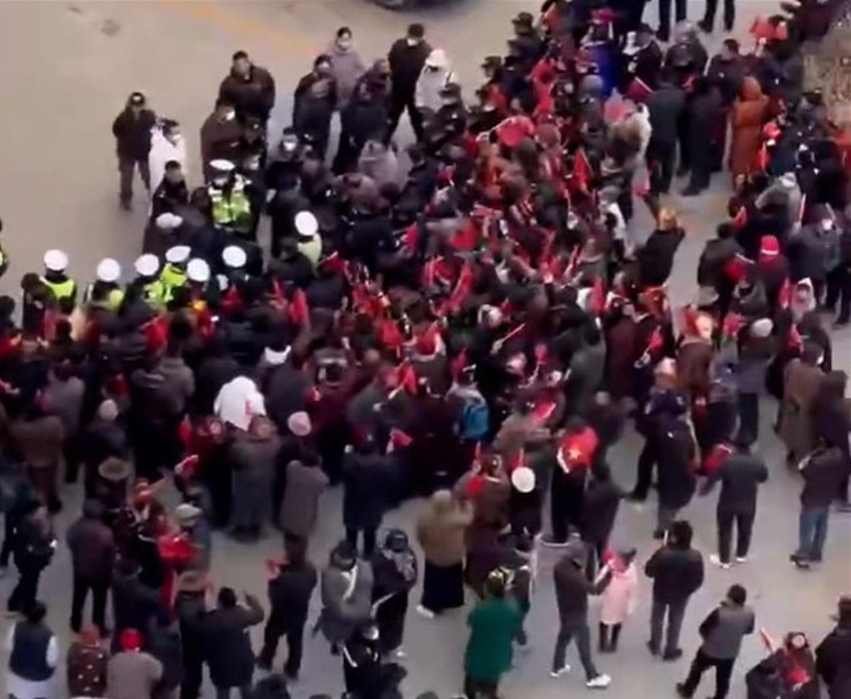Mass arrest of Tibetans protesting a dam on the Drichu River
On Saturday, 24 February 2024, news broke that more than 1,000 Tibetans, including monks, have been arrested after protesting against a dam project that would destroy six monasteries and forcibly displace the residents of two villages.
Over ten days, multiple non-violent protests have taken place to object to the building of the Chinese hydropower dam on the Drichu River in Kham, Eastern Tibet. The Drichu River runs through more than ten Tibetan provinces.
The current status of those arrested is unknown. However, sources have revealed that those arrested have been forced by police to bring their own bedding and tsampa – a staple food for Tibetans – which is usually a sign that the protestors will not be released anytime soon.
Protests on this scale in occupied Tibet are rare due to the Chinese government’s extreme punishments. They show both the continued resistance of Tibetans inside Tibet and the ongoing threat to Tibet’s religion and culture from Beijing’s destructive policies.
Well-known Tibetan writer Tsering Woeser, who is based in Beijing, wrote on Facebook (translated):
According to reports, Kamtok (Tibetan: སྐམ་ཐོག་, Chinese: Gangtuo) Hydropower Station, the “leading” cascade hydropower station built on the upper reaches of the Drichu (འབྲི་ཆུ་, Jinsha Jiang) River, will completely submerge at least six monasteries and two villages in Derge (Chinese: Dege) County, Kham. Among them, Wontoe (དབོན་སྟོད་, Chinese: Wangdui) and Yena (ཡེ་ན་, Chinese: Yinnan)Monasteries belong to the Sakya sect of Tibetan Buddhism, and they have a long history and survived the “Cultural Revolution.”
Ancient architecture styles and murals from them have precious historical and artistic values and have attracted the attention of researchers from all walks of life in recent years. A group of murals from the 14th to 15th centuries are considered “one of the most important Tibetan Buddhist murals discovered locally so far, and have high reference value for the study of Tibetan painting art.” However, now due to the construction of hydropower station, monasteries and villages are facing the fate of being submerged.
Researchers also pointed out the critical situation, “The hydropower station will cause greater difficulties in the subsequent preservation and research of the murals in Wontoe Monastery. The research and protection of these murals in the monastery is urgent.”
VIDEO: Tibetan monks and residents arrested over China dam project | Radio Free Asia

Timeline
14 February: At least 300 Tibetans protested at Dege County Hall calling for a halt to a proposed hydropower station construction and withdrawal of the order for relocation of Tibetans from the surrounding area.
20 February: Authorities inspected Yena and Wonto monasteries in preparation for their demolition, video footage released by Radio Free Asia showed monks prostrating themselves before the visiting Chinese officials to plead with them to halt the construction of the dam.
22 February: Chinese authorities arrested over 100 Tibetan monks and other Tibetans.
23 February: Police arrested over 1000 Tibetans, including monks and local residents. They are being held throughout Dege county as police do not have a single place to detain them.
Links
Radio Free Asia – China arrests more than 1,000 Tibetans protesting dam project
ICT – Reports: China arrests over 100 after Tibetans protest dam
